In my last blog post, I explored the light side of smuggling in the Victorian Era and the innovative ways that female entrepreneurs took full advantage of their women’s-only clothing to advance their position in the marketplace. During my research, I encountered many stories of Victorian women using their skirts for a different purpose: Civil War smuggling to support their troops. In this installment of Crimes of Fashion, I’d like to highlight their bravery.
I love that during a time when women exercised little “official” political power, so many of them eagerly joined in to not just support the troops in spirit, but took a literal hands-on role in the Civil War. From undercover spies to smugglers to actual soldiers, many women very clearly considered themselves as equal participants. Such behavior flies in the face of the many arguments about a woman’s apolitical nature that would come in the following decades during the Suffrage movement.
Women who used their hoops skirts for Civil War smuggling of gear and medical supplies to troops clearly saw how their unique position as women could benefit the causes in which they were invested. We know from other blog posts on this site that, despite the inconvenience, many women loved wearing things like hoop skirts and corsets. Those who decided to use them to smuggle goods to those they cared about may have reveled in the opportunity it gave them to feel feminine and fierce at the same time.
Here are a few of their stories.
Emma Kline: “Let’s make an example out of her”
I will start the list with a Miss Emma Kline, the daughter of a Mississippi planter who found herself at home with five brothers during the war. The entire family got involved in the war effort, so much so that they were eventually exiled into Union territory to prevent them from aiding Confederate troops. Before this, Emma had become very active in getting supplies to the army, though for the life of me I was not able to find out what she typically smuggled, or what she had under her skirt when she was apprehended in May 1864.
By 1864 the entire Kline clan was well-known to Union officials and were being watched quite carefully. A passionate Emma, however, doesn’t seem to have been able to quite comprehend the danger she was in and she set about continuing her exploits. One May afternoon, she and a friend attempted to cross into Confederate lines under the guise of having a “family pass.” Little did they know that they had been being watched all day, including during their stop in town to collect supplies at the residence of a Dr. Anderson. Years later the arresting officer wrote:
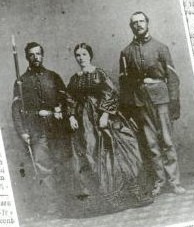
“In a short while the carriage approached, and its occupants had a pass signed by Gen. McPherson for Mr. Thompson and family through the lines at Vicksburg. One of the ladies had bright red hair, a pale complexion and rather sharp features. The writer asked her if she was a member of Mr. Thompson’s family, and she said she was not. She gave her name as Miss Emma Kline. The writer could hardly repress a smile as he noticed their distended skirts….”
Emma was held in a Union jail for a short, though (now) unknown amount of time. She was released, but not before a now well-known photograph of her was taken and published in papers as a warning to other hoop skirt smugglers.
Elizabeth White, Annie Hempstone, Kate & Betsie Ball: Society ladies with a plan
On July 5, 1864, a battle took place in Maryland in which a Col. Mosby and his men defeated the Union troops. That night he dined and relaxed at Temple Hall, the home of Henry Ball, a former soldier and father to two who were fighting. The night was a festive one. Absent, however, were some of the female family members. The reason? Wanting to take advantage of the location of the troops near the Potomac River, they had embarked on a supplies mission and were staying overnight in a nearby town to get an early start.
The women obtained rolls of cloth and the much sought after boots. The calico was bundled up and easily attached underneath the skirts and the boots attached to the ribs of their hoops. Emboldened, the group set off to cross the river back and deliver the goods, presumably to Mosby himself.
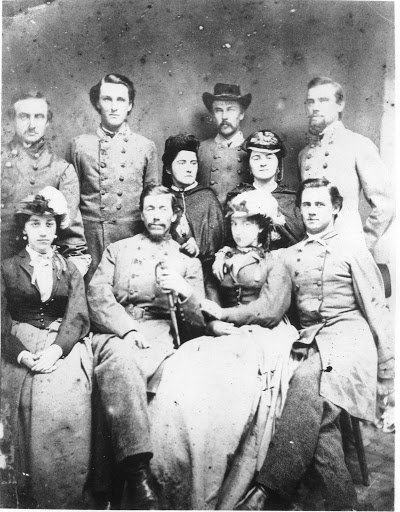
Only half of the trip would be easy, however. By the time the goods had been secured under their skirts guards were stationed at the river’s crossing point. Quickly they retreated back to the home of Elizabeth’s (wife of a cavalry officer) mother and hid the goods in the walls. They were clever to do so, for they were all arrested the next day on suspicion of spying. Although their skirts assisted them in a smuggling operation, it could not help them hide the fact that they were all known secessionists and married to prominent Confederate soldiers. Their presence on that side of the river was highly suspect.
The women were held for three weeks. By this time they had effectively convinced the guards that they had merely crossed the Potomac for fun and were released. Remarkably, before heading back to Temple Hall they retrieved the goods from the walls, secured them back under their skirts, and were able to get the boots and cloth to the soldiers after all.
Elizabeth Van Lew – Turning stereotypes on their head
While I haven’t yet come across stories of Elizabeth Van Lew smuggling goods under her skirt, I think that she deserves inclusion in this post for the brilliant ways that she used other parts of female clothing to support Union troops. So successful was she in doing so that, according to William Rasmussen of the Virginia Historical Society: “She is considered the most successful Federal spy of the war.”
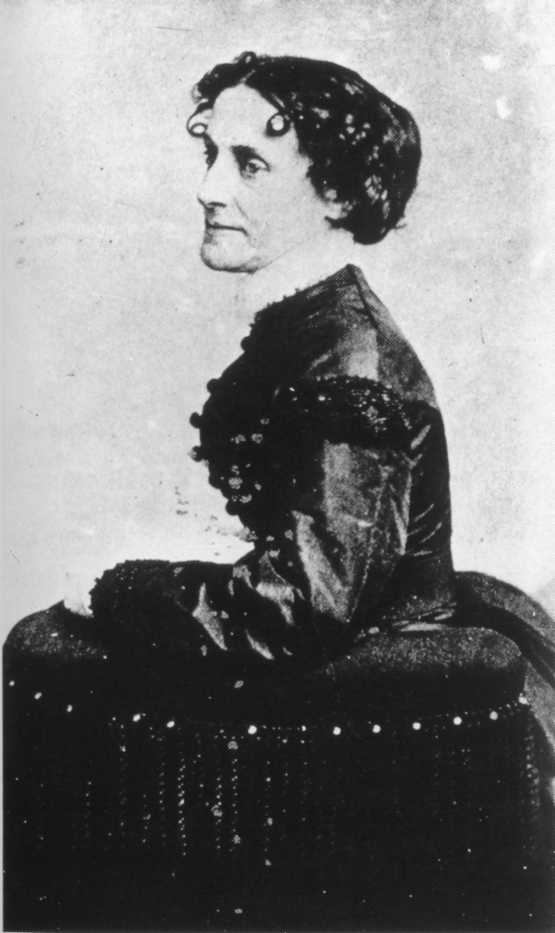
Elizabeth was a brave soul. A slave owner herself, when the war started she found herself living in the heart of the Confederacy, Richmond. Long since decided against slavery, however, early on she threw her support to the Union, much to the chagrin of her community. She began with paying visits to POWs in nearby jails and quickly escalated to smuggling in and out ciphers in books. Elizabeth also utilized the feminine role of dogooder and baker by bringing in coded messages to the prisoners in the bottom of her custard dish. In one famous story, she predicted the guards were onto her. Stashing a message in her shawl, she instead had the bottom filled with boiling water, much to the shock of the guard who conducted the search.
While the other women discussed here used their feminine charm and looks to benefit their ability to deceive, Elizabeth took a different approach. When her hostile neighbors began to attack her mental capacity because of her rumored allegiance to the Union, she took to combing her hair crooked, wearing her oldest dresses, and walking the neighborhood looking generally disheveled. Given her wealthy background, this led neighbors to jump to the conclusion that she was indeed, disturbed, and therefore not a threat to the cause.
Elizabeth also used the heels of her slave’s shoes to smuggle in messages as they would deliver food to the prisoners. At one point recruited a pattern maker to embed codes into the patterns. When she died, the cipher she used was found hidden in the back of her watch.
Belle Boyd – Cleopatra of the Secession
Historians have often said that Belle Boyd took smuggling to a bit of an art form. She is now recognized as one of the most influential female spies of the Civil War both for her ability to manipulate information from soldiers and the amount of weaponry she was able to conceal under her skirt. I also think she deserves recognition for not seriously injuring herself given what I have learned about her smuggling.
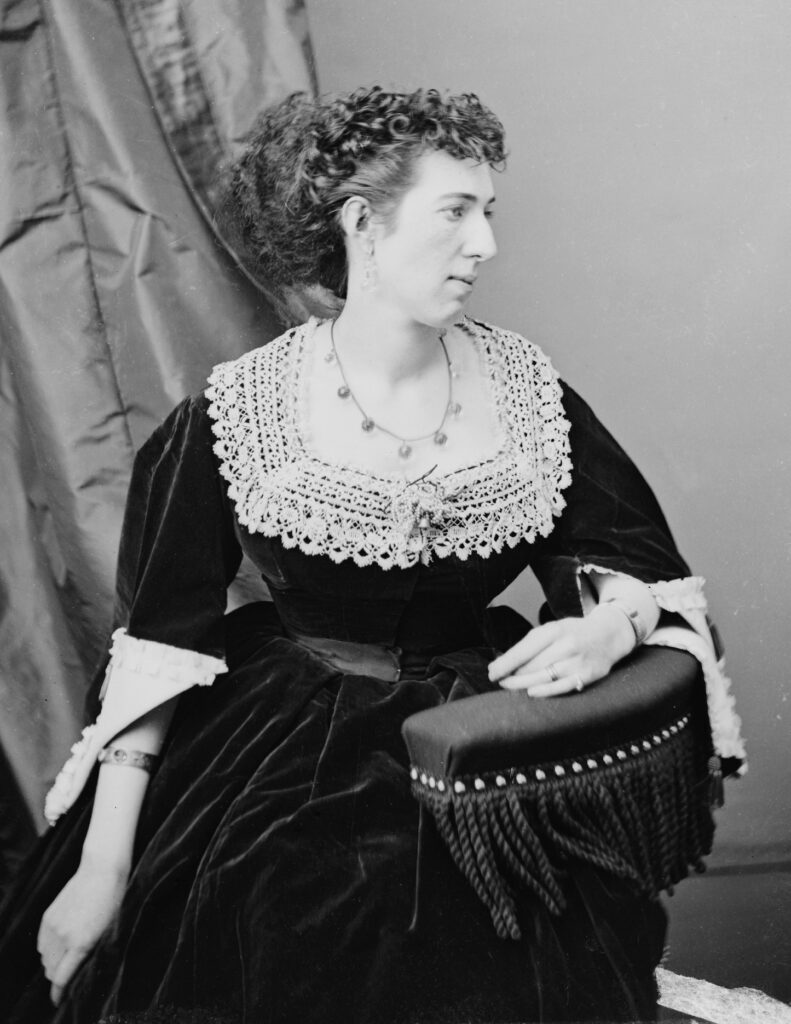
Because Bell was known as such a spinner of tales, it is hard to be sure about the details of her life. Although she wrote an autobiography after the war, historians discount a lot of the content as exaggerations. What we do know is that she was a passionate southerner who decided to enmesh herself in the war after seeing her family mistreated by Union troops. Her true passion seems to have been extracting information from one side to relay to the other, but she also loved to play a more hands-on role by delivering supplies.
But even as important, she loved to first take supplies from advancing troops, rendering them less effective.
In one famous story, Belle organized a sassy smuggling operation, training a group of other southern belles to hide arsenal in their hoop skirts. They attacked while Union troops camped near Haper’s Ferry, West Virginia were relaxing one evening. The troops returned to find “200 sabers, 400 pistols, 1,400 muskets, and cavalry equipment” missing from camp. Today we might refer to it as an enemy troops haul.
Belle didn’t just use her skirts to smuggle contraband, she used them to get her flirt on. She took lovers on both sides of the war and easily extracted information from unsuspecting gentlemen who were unaware of a woman’s ability to perform as a spy. In my favorite story, her Union lover gave her up, which she reportedly took in stride with an “all’s fair in love and war” attitude.
Image source for musuem pic: https://thevintagetraveler.wordpress.com/2019/05/03/education-museums-and-the-daughters-of-the-confederacy/

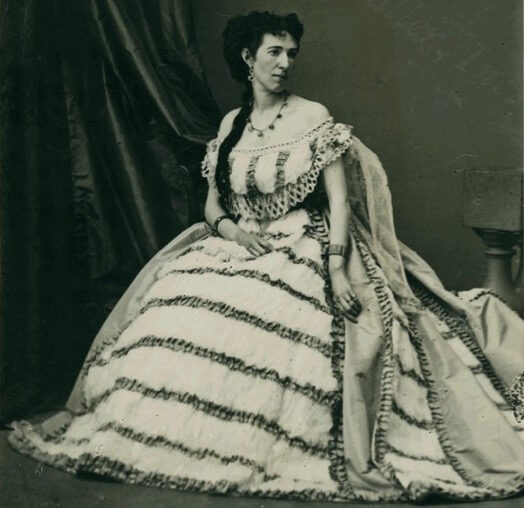



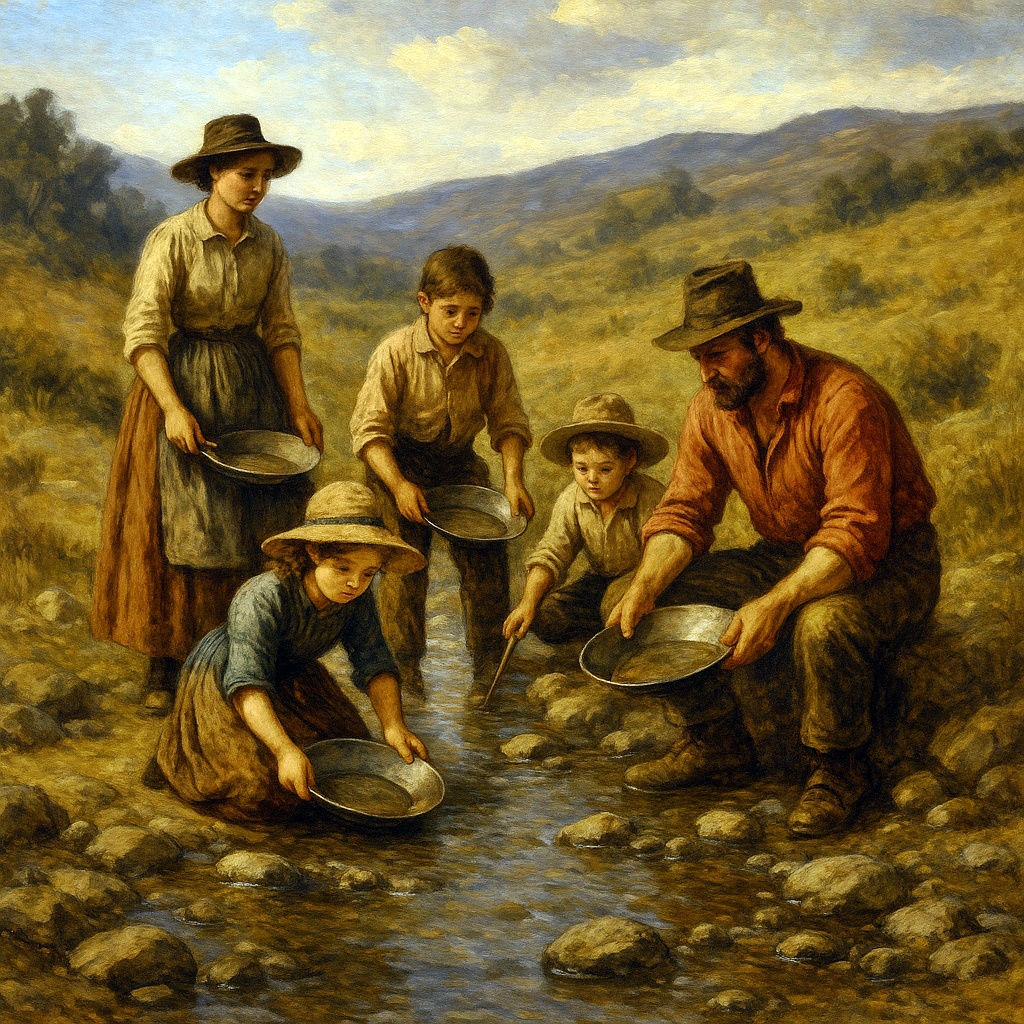








A multi-great grandfather of mine, was a doctor in the Confederate Army, and a POW at a Union Army camp. In exchange for treating Union soldiers, he was allowed visits from his wife, who carried letters to and from him in her hair…. She was caught, and hung as a spy. Not sure if he was personally punished, but post war, he settled in Washington, where my grandfather was born.
Thank you for your time, effort, researching- thus an astoundingly and enjoyable History lesson.
Thank you for including the fantastic links resulting in a goldmine, wealth of education, more images to be viewed, telling of mother of invention- of any ingenuity used of all the ladies, the list of goodness goes on…
Lastly thank you for reminding me of great women and their spirit.
I leave you with a found quote:
The most dangerous woman of all is the one who refuses to rely on your sword to save her because she carries her own. R. H. Sin